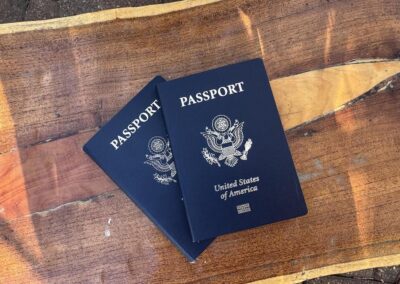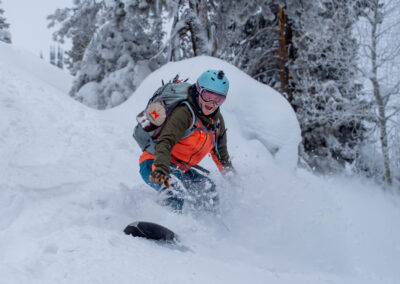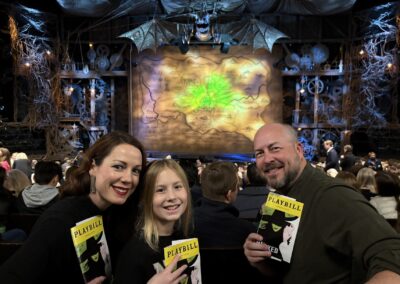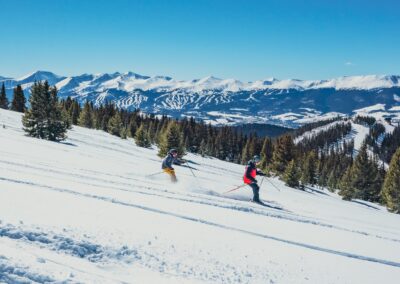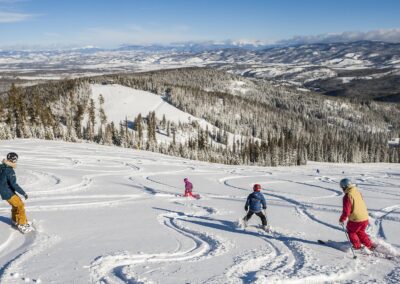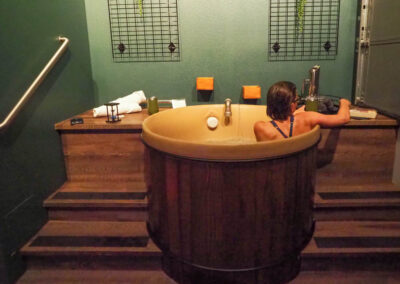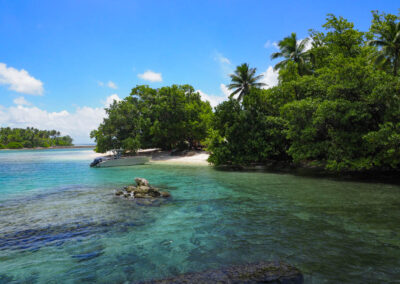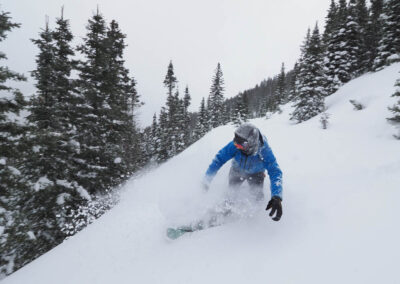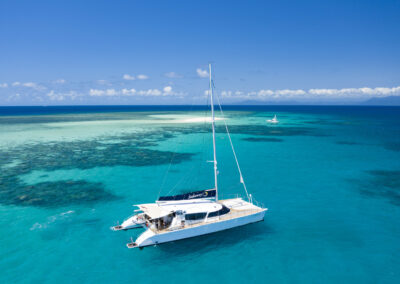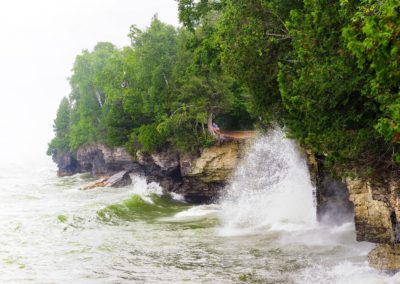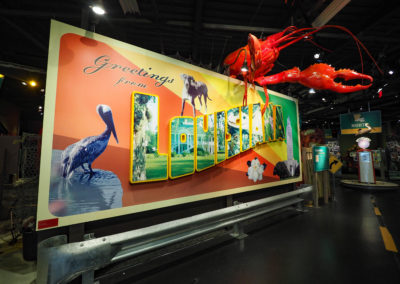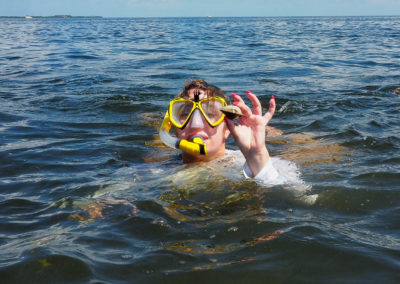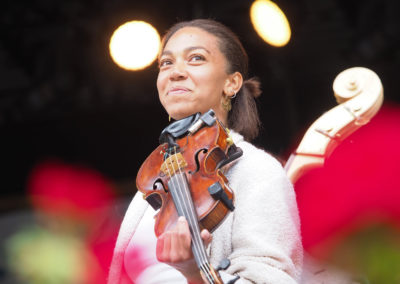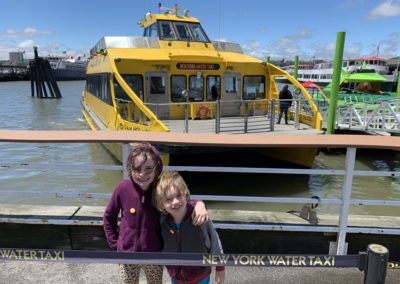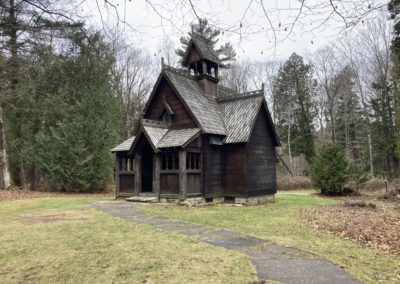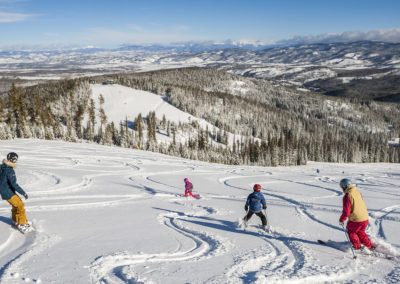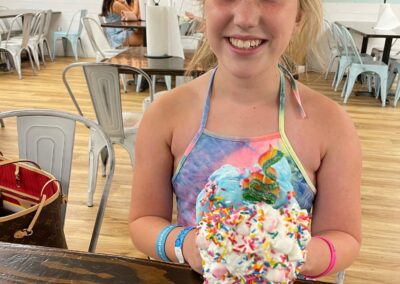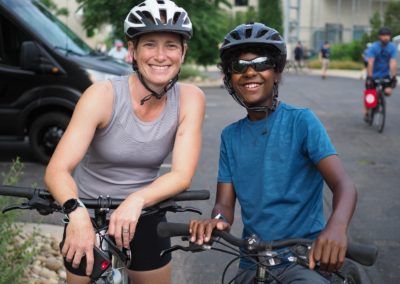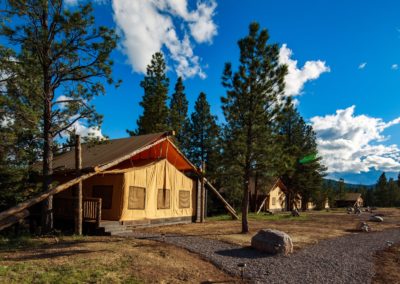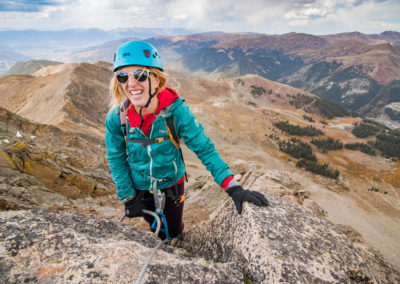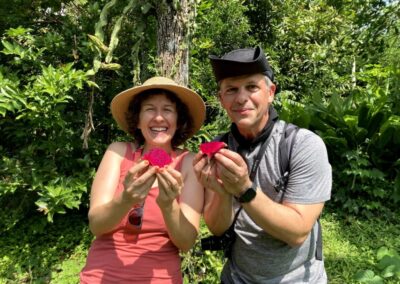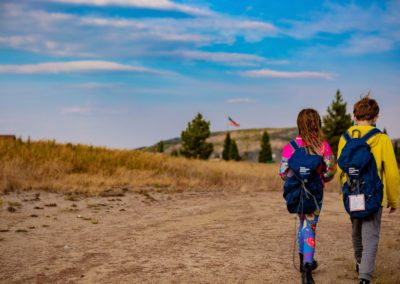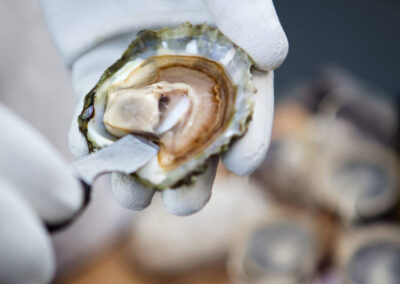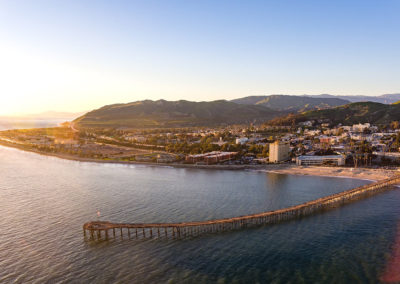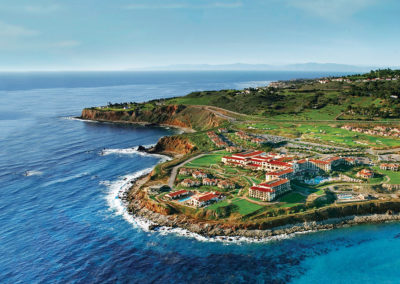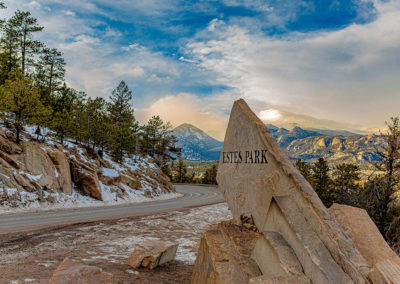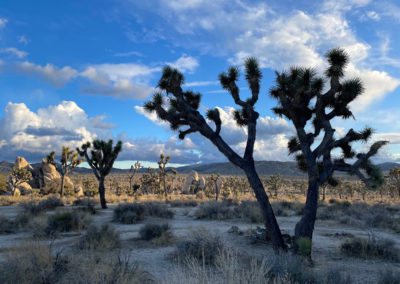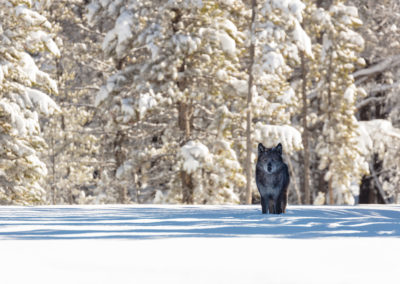It’s finally here –– the family ski trip you’ve been dreaming about for years.
What’s arrived with it? The harsh realities of skiing with your kids for the first time: On-mountain temps will be in the single digits for your entire family ski trip. A Herculean effort is required to dress each kid in multiple layers before juggling everyone’s ski gear from the base to the lift line. And you feel as if you’ve just run a marathon and all the kids are crying before anyone has even clicked into skis.
For Central Texas families who only ski every once in a while, the entire process can seem overwhelming. But, I promise, the memories that await on the mountain make the hassles at the base completely worth it.
If you’re planning on hitting the slopes for spring break with the kids, here are eight great tips that can help make your family ski trip a little smoother and more memorable (in a good way).

Writer Mauri Elbel and her family skiing last month at Winter Park Resort.
- Make a list and check it twice.
Preparing for a family ski trip is completely different than packing for the beach, when you can toss swimsuits, a few coverups and flip flops into a suitcase and make do if you’ve forgotten anything else. We like to create a detailed list of each family member’s necessary gear, from balaclavas and mittens to toasty winter socks, ski goggles, ski jackets and bibs. Storing each child’s ski accessories in his or her own labeled two-gallon Ziploc bag not only saves time when dressing quickly for a day on the slopes, but it also prevents our kids’ critical items from disappearing. During sunny spring ski days, sometimes a simple base layer is all you will need. But when we skied this past January and temperatures hovered in the single digits, we needed several layers beneath our ski jackets and pants –– plus hand warmers and toe warmers –– to make it through the day. It’s always better to peel off a fleece or underlayer than to be miserably cold on the mountain.
2. Plan Ahead for Rentals.
Whether you rent from a local ski shop or directly from the ski resort, make sure to do it ahead of time and try to avoid picking them up during peak times, like when the shops open for the day. “The equipment and logistics can seem overwhelming, and that is before you ever set foot in your skis,” says Jonathan Naughton, a professional alpine instructor for 35 seasons who has spent the last 14 seasons at Winter Park Resort. “Today you can reserve ski rentals and lessons ahead of time and know where you have to go and when you have to be there. If you can arrive the afternoon before, getting rentals figured out the evening before saves time that next morning, which will be busy.” Since we aren’t a family who cares about being first on the lifts every day, if we don’t have time to get our rentals the day before, we arrive around mid-morning after the crowds have passed and the lines have dwindled.

Skiing with kids takes a lot of effort but the on-mountain rewards are worth it. Photo by Mauri Elbel
At some ski resorts, you can even have the rentals come to you. Ski Butlers is a full-service ski and snowboard rental delivery company that delivers hassle-free rentals directly to your doorstep at various ski resorts throughout the country, including Colorado’s Aspen/Snowmass, Breckenridge, Copper Mountain, Keystone, Steamboat, Telluride and Vail/Beaver Creek.
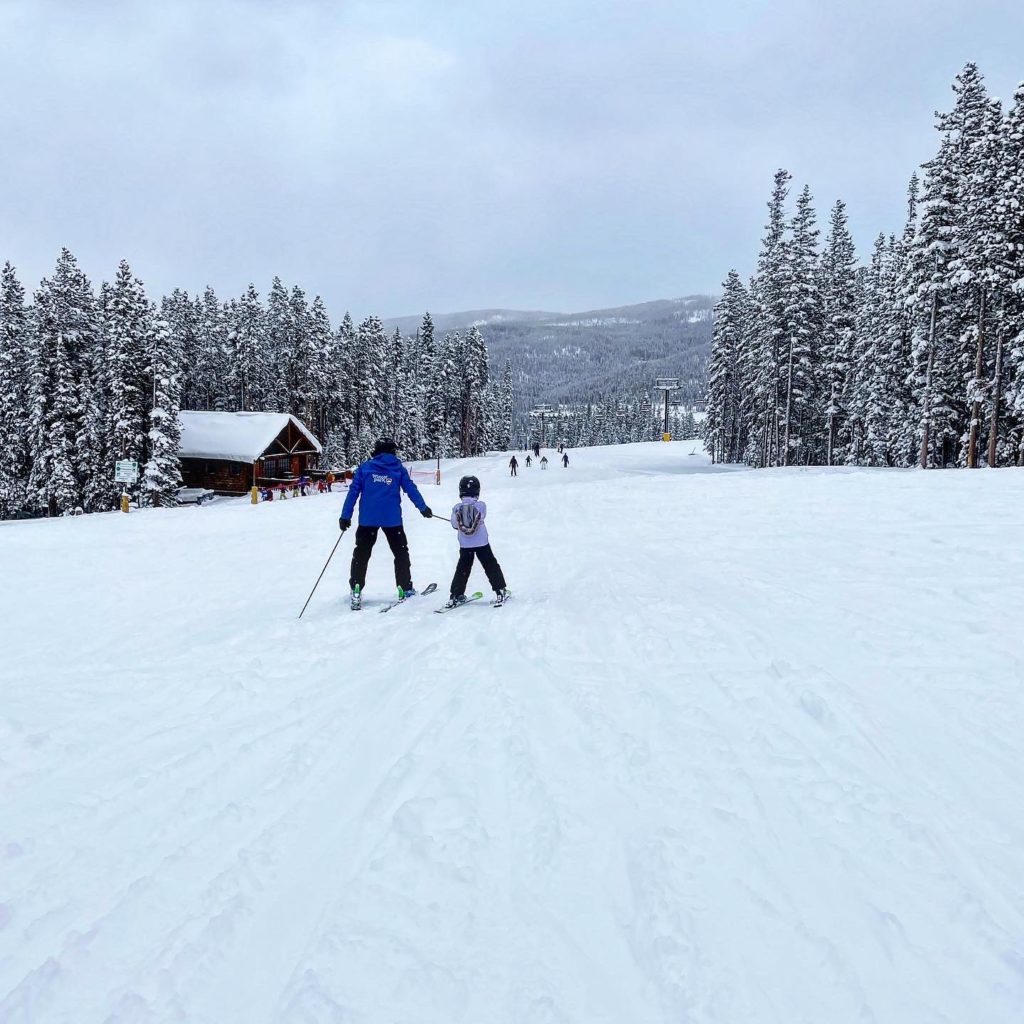
Jonathan Naughton patiently works with Mauri Elbel’s 7-year-old daughter on the beginner terrain in Discovery Park. Photo by Mauri Elbel
3. Take it slow.
On our first day back on the slopes for this year’s family ski trip to Winter Park Resort, our boys, 10 and 13, were ready to conquer the moguls on Mary Jane while our 7-year-old daughter was content taking repeat runs through Discovery Park’s beginner terrain. We’d start out each day on the easy greens as a family before I would peel off with our boys while my husband stayed back with our daughter. We’d meet for a late lunch, swap roles, and our daughter was usually cold and tired so she and I would call it a day with an après ski hot chocolate (her) and beer (me), while everyone else skied until the lifts closed. When kids are little, it’s important to keep skiing fun, not scary, so they want to go out again the next day. “Being ready for steeper terrain on the mountain takes time,” says Naughton, who will tell you that kids skiing or boarding on slopes steeper than what they are comfortable with does not generally end well. “For older children, the rate that they gain skills can vary greatly,” he says. “Let them enjoy skiing on the terrain they are comfortable with, while encouraging them to improve.”

Naughton gives writer Mauri Elbel’s two boys tips before skiing intermediate terrain at Winter Park Resort. Photo by Mauri Elbel
4. Pack your patience.
Most of us have witnessed it, some of us are guilty of it, and we all want to avoid it: frustrated parents losing their cool with their equally-frustrated kids mid-mountain. And I’m continually amazed observing ski instructors interact with those same cold, tired and frustrated kids learning to ski. The difference, as far as I can tell, lies in a few universally shared traits that professional instructors possess and beginner ski parents lack. Ski instructors tend to be incredibly passionate about the sport, well-adjusted to mountain conditions and are some of the most laid-back, jovial and patient people on earth. “Young children are often in a cold, snowy, alpine environment for the first time,” says Naughton. “Getting them used to the snow and having them have a great time is my first goal. If they want to come back and ski again, that is a win for both me and the family. It is important to remember that everyone is on vacation and wants to have fun. Children, especially young children, will tire fast. If they are tired after a half day, pack it in and head to the restaurant for a hot chocolate.” He’s right, and that’s exactly how we ended most of our ski days last month –– earlier than planned and with a hot cocoa in hand.

Ending the ski day a little early to warm up with hot cocoas. Photo by Mauri Elbel
5. View lessons as an investment.
I vividly recall my less-than-graceful first-ever ski day as a kid when my dad (also a beginner) gave me a few pointers at the top of the mountain before I went careening down it, veering off the trail, smacking into a tree and losing both my skis. Fast forward a few decades, and that single experience has shaped the way we begin each family ski trip –– by booking lessons with an expert, like Naughton, who gave us a half-day private family lesson on our first day back at Winter Park Resort. The success of repeat family ski trips hinges on that first experience. “If it goes well, then the family will likely enjoy the trip fully and want to do it again,” says Naughton. “Skiing is not intuitive for most people, so lessons really make a difference.” And while private or group lessons can be expensive, they are also well worth it –– especially in those learning-to-ski years.

Writer Mauri Elbel and her boys splitting off to tackle the blue terrain. Photo by Travis Albrecht
Naughton calls the first couple of years of skiing with kids “investment years” –– while parents may want those kids up and skiing with them on the mountain, it’s important not to push too hard. “If you invest time skiing with the kids on terrain they are comfortable with and invest in lessons so that they are learning how to ski efficiently, it will pay off in the long run,” he says. “As a result of my wife skiing with our small children as they learned, our young adult children now ski with my wife and me and wait for us when they get ahead.”
RELATED: Five reasons Colorado’s Winter Park Resort should be on your family’s ski trip list
6. Hydrate and pack snacks.
During the days leading up to our family ski trip, I pump our kids full of water. Hydrating really well before –– and during –– a trip to any high-altitude destination is the best way to acclimatize and reduce the chances of altitude sickness once you’ve arrived. Our youngest is almost always impacted by higher elevations, but I’ve noticed the symptoms are less severe when she’s well-hydrated. We also usually stop off on our way up to the mountains for some just-in-case children’s Dramamine and a small can of oxygen, which tends to help alleviate temporary altitude-related symptoms like nausea. I always stash a granola bar in each kids’ ski jacket – sometimes you’re 30 minutes or more away from any food options at the base and a little extra fuel is required to get there.
RELATED: 10 tips for road trips with kids
7. Stay slopeside.
For families with young kids who aren’t used to getting around in bulky ski clothes or carrying their own ski gear, staying slopeside can make or break the entire experience. Most major ski resorts have cozy, family-friendly lodging options positioned steps from the chairlifts, which we’ve always found worth the extra price for the convenience. Some ski resorts also offer free valet services for your rentals so you don’t have to schlep your gear to and from your room each day. Another perk? The free shuttles just outside the door will transport you throughout the resort or to town for groceries or dinner.
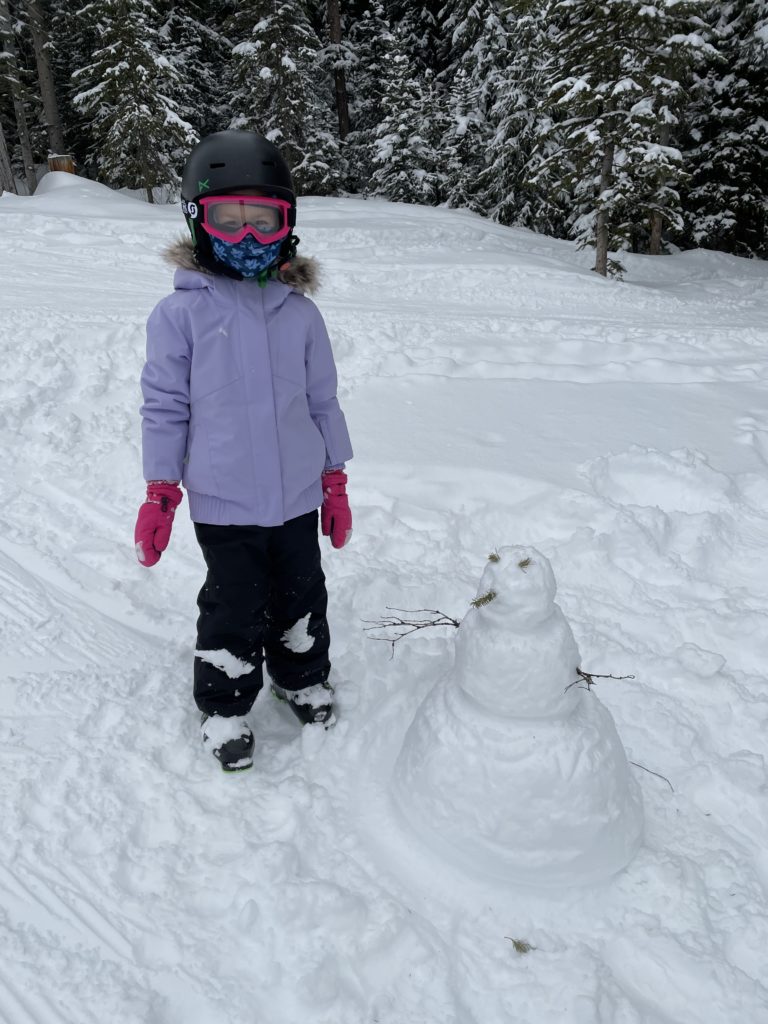
Do you want to build a snowman? Photo by Mauri Elbel
8. Take a day to play and prioritize fun.
Remember to schedule some off-the-slope fun into your ski trip vacation. After two or three consecutive days of skiing, most kids need a break. Whether you head to the snow tubing hill, go ice skating, book a snowmobile tour or just spend a relaxing day playing in the snow, some of our best snowy memories are the ones we’ve spent out of our skis. “It is the entire ski experience that the kids will remember,” says Naughton. “The skiing is great, but so is a hot chocolate next to the fireplace and a pizza dinner. If they enjoy the trip as a whole, they will want to come back again.”
If You Go

Getting there:
There are a multitude of direct flights from Austin to Denver, and Winter Park Resort is the closest major ski resort to the Mile High City.

Stay:
With kids and all of the accompanying ski gear, there’s nothing more conducive to a seamless day on the slopes than when it starts and ends right outside your door. Winter Park Resort’s Zephyr Mountain Lodge is located at the base of the resort just 110 feet from the lift and features one-, two- and three-bedroom fully equipped condos perfect for families.
Do:
While skiing or snowboarding might be the reason for the trip, be sure to schedule in some off-the slope snow-laced fun like snowshoeing, snowmobiling, snow tubing and ice skating.

Insider tip:
While you might think you’ve spent enough money on lodging, rentals and lift tickets, it’s worth the investment in lessons during those beginner years because it sets the tone for a successful ski vacation.











